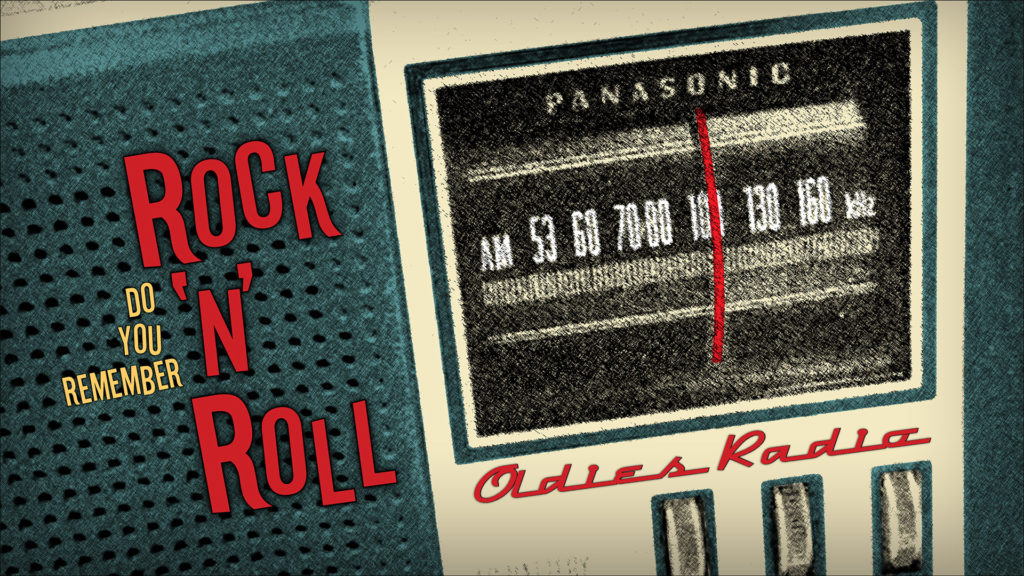
Previously on The Formative Years…
I took some old records off Mom & Dad’s shelf
Talked ’bout ’70s disco, sci-fi and my nerdy little self
Superheroes, cartoons, and my older bro
Now let’s get into rock ‘n’ roll oldies radio*
In TFY Pt. II I spoke of how 1950s nostalgia influenced 1970s culture and how rising creatives at the time channelled romanticized memories of youth into their adult endeavors. Today I set aside the broader social implications of the revival phenomenon in order to focus on my earliest experiences with ’50s and ’60s music and explore how rock oldies radio affected my musical sensibilities going forward.
*Sincerest apologies to Bob Seger (please don’t sue).
Time, RELATIVity, and ROCK OLDIES
I’d understand if anyone coming of age today mistakenly concluded that Bob Seger was being self-referential when he sang his ode to “Old Time Rock and Roll“; the song is almost 43 years old! Has it really been that long? The real kicker, however, is knowing that Seger’s classic anti-disco anthem was released a mere 24 years after the commonly recognized year-zero for rock and roll (1954). That’s hardly “old,” right? Too young to have witnessed rock’s birth, but old enough to remember the ’70s rock ‘n’ roll revival, I can’t deny that all these numbers are weighing on me…
In 2021, several of the albums responsible for exploding alternative rock into the pop mainstream (Nevermind, Blood Sugar Sex Magik, Ten, Gish, Badmotorfinger, etc.) turned 30!! How is that possible? When those records came out I was 19, working two jobs, and fumbling through my first year of college. More surreal still, I’ve recently come to realize that my favorite “contemporary” artists, St. Vincent and The Shins, released their debut albums fifteen and twenty-one years ago, respectively!!! What…? Is that right? Sure, I didn’t buy those cds when they were first released, but it still feels like they just came out. Does this mean that the song “New Slang” is…classic rock? Am I that old now??? Yes. Yes I am (sigh).
As the decades pile up and lead us ever further away from rock’s beginnings, notions of what qualifies as “classics” and “oldies” becomes ever more relative.
Will You Remember Jerry Lee?
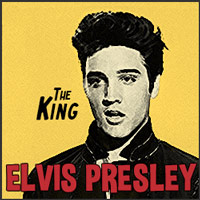
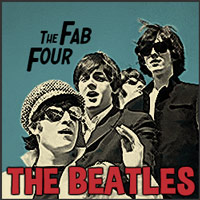
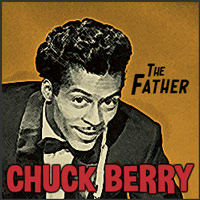
Do you “remember when rock was young?” Do you like to swallow bitter pills? Well! Try on this mad truth for size… The classic tunes that were initially leveraged to draw the “silent generation” and baby boomers to 1970s rock oldies radio are now in the range of 70 years old!
It’s crazy, I know, but that’s not all! In time, as those generations thinned and progressively shifted listening priorities from music to 24-hour “news,” slumping ratings forced programmers to find a new “mature” demographic to exploit: mine. Consequently, as oldies playlists lean ever more on ’70s and ’80s nostalgia to hook Gen-Xers, the true rock classics are getting squeezed out. ’60s acts still get some play, but songs that pre-date the British Invasion are rarely heard. At this rate, by the time Gen-Z ages up all early era artists not named Elvis, John, Paul, George and Ringo will have been phased out of public consciousness altogether.
Things change. It happens. But how can it be that “Detroit Rock City” has zero standard radio outlets reserved for rock’s foundational artists? Where are Chuck Berry, Buddy Holly, and Little Richard? Why do we now have to rely on streaming services, YouTube, and (gasp!) the purchase of physical media in order to hear Fats Domino, Jerry Lee Lewis, and the Everly Brothers? It’s absolutely absurd! It’s a travesty! This will not do! Curse the callously calculating winds of commerce! The kids need to know their musical heritage (whether they want to or not).
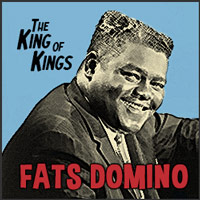
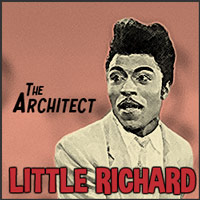
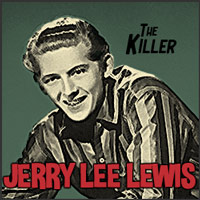
“Will you remember Jerry Lee, John Lennon, T. Rex and OI Moulty?
Joey Ramone from THE RAMONES’ “DO YOU REMEMBER ROCK ‘N’ ROLL RADIO?”
It’s the end, the end of the 70’s. It’s the end, the end of the century”
Overpowered BY funk (and rockabilly and britpop and…)
Sooooo… Rock and roll and me.
Ugggghhhhh, where do I even start?
Outlining my indoctrination would be so much easier if I could posit rock as a single, distinct genre rather than a wild convergence of early 20th century (mostly) American music traditions. Here goes nothing.
In the beginning there was only total nothingness…
Then, in the late 1940s and ’50s,* pop, blues, jazz, boogie woogie, folk, country, black gospel, etc. all variously merged into one another and split again into the earliest rock forms – r&b, doo wop, rockabilly, girl groups, skiffle, etc., etc. In turn, as 1950s acts infiltrated the pop music landscape, mutually influenced one another, and evolved, rock’s next waves brought astounding flurries of development; enter ’60s soul, the British Invasion, surf, folk rock, funk, psychedelic, prog, etc., etc., etc., etc
Now, I don’t know if I was preternaturally possessed or came by my affinity for pop media due to constant reenforcement. A little of both would be my guess. Either way, because 1970s media was a melting pot of all twentieth century entertainment streams, I was exposed to all these myriad music forms as a young boy. With innocent ears both awed and overpowered, I sat passively in place and soaked it all in.
* Ok, so I skipped ahead a little…
Reconstructing ’70s ROck OLDIES Radio
Prior to the rise of album-oriented rock radio in the late-1960s stereo sound was something of a novelty. In fact, with the exception of classical works, most albums were only pressed for mono (single-speaker output). Many common consumer radios weren’t even equipped to receive an FM signal. Therefore, to folks born before 1960, the AM dial was the go-to place to hear the biggest mainstream hits of today and yesterday.
I was still in diapers when the rock oldies craze hit Detroit AM radio in 1974, so my memories are understandably sketchy. Between the orgiastic quantity of TV, records, and retro-friendly radio content I consumed as a kid and everything I’ve encountered since, it’s practically impossible to keep my facts straight. Many thanks are due to older family members, friends, and my favorite rabbit hole of information – the internet; my attempts to reconstruct these foggy memories of melodies heard long ago would have been impossible without them.
Honey (Radio) That’s What I Want

Established in 1974, “All Oldies” Honey Radio WHND AM 560 was simulcast on FM 94.7 until 1976.
Beyond these points, concrete info about the station and the exact scope of it’s programming is spotty; limited to a general consensus that playlists were principally gleaned from the early rock era, c.1955-’63. Bill Haley’s “Rock Around the Clock” (1954*) is probably the earliest song my older brother and I remember hearing on Honey Radio, so the front part of that estimate is close enough. The back end, on the other hand, is another story…
Even if WHND didn’t originally play anything cut after ’63, song selections unquestionably pushed well into the 1960s by the time we started listening in the mid-late 1970s. “Turn Turn Turn” (’65), “Incense and Peppermints” (’67), “Mrs. Robinson” (’68), “Sugar Sugar” (’69), and “Tears of a Clown” (’70) are all tracks we clearly recall hearing on 560. Further, I found two AM 560 caps on YouTube dated 1979 that corroborate our timeline and more; with one song – “All I Ever Need Is You” – hailing from ’71.
*One of innumerable tunes considered to be the first ‘true’ rock song.
Let’s make a rock oldies mixtape
My brother used to hang out in our room for hours on-end listening to Honey Radio. In those times of solitude, when he wasn’t meticulously piecing together plastic model kits, he was making mix tapes; capturing tunes from an AM-only, hand-held transistor radio to an old-school portable cassette recorder.* I was usually off elsewhere in the house wreaking havoc, but always kept an ear to the ground for favorite garage-flavored novelties (“Surfin’ Bird“; “Wild Thing“), bubblegum confections (“Sugar Shack“), early rockers (“I’m Walkin‘”; “Summertime Blues“), and anything that featured cool electric organ tones (“Runaway“; “House of the Rising Sun“; “Light My Fire“; “She’s Not There“). Frequently featured ’60s pop-rock icons The Beatles, Beach Boys, and Monkees were huge favorites as well, but hold this thought; I’ll be delving more deeply into my love for all things 1960s rock in the next post.
* A hobby I also adopted as a teen with the acquisition of my first radio/tape deck. (Melodramatic tones) See brother…Youuu made me this wayyyyy (smile).

You Can’t Always Play what You Want
I can’t say if Honey Radio playlists were incomparably comprehensive, but they definitely covered a lot of bases. Hour by hour and day by day, loyal listeners were treated to the work of legends who bridged r&b, country, folk, and pop to rock (Elvis; Ray Charles; Johnny Cash; Bob Dylan; Beatles; Beach Boys; Rolling Stones); soul pioneers (Sam Cooke; Jackie Wilson; James Brown); British rock institutions (The Who; The Kinks), glamorous girl groups (The Supremes; Martha & The Vandellas), squeaky-clean teen idols (Frankie Avalon; Ricky Nelson), scruffy harbingers of the counter-culture (Jefferson Airplane); jangle pop progenitors (The Byrds; The Hollies), one-hit wonders (“Get a Job”; “Earth Angel”; “Tequila”; “Wipe Out”), and much, much more.
Of course, no matter how diverse WHND’s rock oldies selections were, they couldn’t play everything. To venture a guess, it makes sense that a line would have been drawn to exclude late ’60s tunes that were deemed too aggressively uncommercial for the normals; leaving artists that were either too “blacksounding” (James Brown), heavy (Led Zeppelin), arty (Velvet Underground), atonal (The Stooges) or weird (The Mothers of Invention) to the purview of early AOR FM radio and word-of-mouth. Was this true? All I can confirm is that I personally didn’t hear any of this stuff until late high school or later.

The Big 8
For decades, “The Big 8” CKLW AM 800 out of Windsor, Canada was one of the premier popular music stations in North America.
In the late ’60s, CKLW adapted a programming scheme akin to the hyper-commercial “Boss Radio” format out of L. A., California. In this configuration, an army of tastemaking DJs relentlessly plugged over top of song intros in order to squeeze a maximal number of heavily rotated records and lengthy commercial jingles into each hour of airtime. I have always found the guileless, endless prattling of disc jockeys to be a terrible distraction, but what do I know? The audience apparently loved it (shiver).
Anyway, AM 800 nicely compensated for the constant intrusions; making regular accommodation for regional favorites, showcasing a wide variety of artists, and playing hits from the not so distant past. With great consideration for the sizable African-American audience within their massive broadcast range,* additional effort was also made to feature popular r&b/soul/funk artists, past and present. A lot of Detroit stations played Motown, of course, but CKLW’s broad appeal made it a great candidate to have helped introduce me to “Little” Stevie Wonder, Marvin Gaye, Mary Wells, The Temptations, The Four Tops, and many, many more.
* Windsor is located directly across the Detroit river from Hitsville U.S.A.
Canadian Radio roll Teleology
In the early 1970’s, the Big 8 was reputedly impacted by new Canadian broadcast regulations that mandated as much as 30-50% representation of homegrown talent in the playlists of national outlets.
Theoretically, these regulatory actions should have meant serious exposure for important northern acts; providing a showcase for Anne Murray, Gordon Lightfoot, Joni Mitchell, The Band, Leonard Cohen, Neil Young, and The Guess Who. Empirically, however, if the lengthy audio caps I unearthed from YouTube are a fair representation of the station’s programming in the ’70s, I can’t validate the assumption. Volumes of contemporary fare and healthy doses of ’60s rock (“Nobody But Me“), r&b (“Cool Jerk; “Everyday People“), and pop (“Happy Together“) presented as advertised, but Canuck artists were few and far between. Sure, I could’ve picked Murray and Lightfoot* out of any lineup because they were successful crossover artists here in the U.S. However, I wouldn’t grow in familiarity with most of the others until my late teens and beyond.
* Sounds like a buddy comedy cop movie, eh?
the great voice of the Great Lakes
No conversation about how I came to love music – any music – can be complete without mentioning “The Great Voice of the Great Lakes” AM 760 WJR.
Recycling a childhood reminiscence shared previously in TFY Pt. I, mornings in my parent’s house were once “defined by the smell of coffee brewing in the kitchen, industrial size boxes of Cheerios,” and the amiable, comforting tones of “The Voice of Detroit,” J.P. McCarthy on WJR.
Relating to the subject matter at hand, AM 760 wasn’t a music station per se… Rather, anchored by a deep stable of mild-mannered yet colorful on-air personalities,* WJR was a rich stew of news, weather, traffic, sports, public interest segments, regional commentary, conversational interviews with local and national public figures, reflection, listener call-ins, humor, and music.
In general, programming favored “mature” forms; shows like Patterns in Music, Afternoon Music Hall, McCarthy’s weekday morning show, and others offering classical numbers, big bands, and pop standards from the Great American Songbook (Eg. Gershwin, Berlin, Porter, Lowe, Rogers, and Mancini; Armstrong, Sinatra, Cole, Fitzgerald, and Andrews). That fits. It wasn’t a youth-fixated contemporary pop format. …But WJR’s lengthy list of variety shows did, indeed, occasionally edge into ’50s, ’60s, and ’70s light rock and rock-adjacent MOR (middle of the road) territory.
* McCarthy, Jimmy Launce, Ted Strasser, Mike Wharf, Paul Harvey, Warren Pierce, Ernie Harwell, Paul Carey, et al.
Tell me MOR, Tell me MOR
WJR’s ventures into modern music tended toward the MOR–Brill Building–adult contemporary end of the pop-rock-soul spectrum. However ambivalent I might have been at the time regarding songs heard while bouncing around within earshot of the kitchen radio, warm, if fuzzy, impressions emerge while stripping back forty-plus years of repression…
Of the ’50s and ’60s material they would have featured, I recall early soft rock balladeers (Connie Francis; Paul Anka; Bobby Darrin), singer-songwriters (Neil Sedaka; Neil Diamond; Harry Nilsson; John Denver), trumpet player/brass band leader Herb Alpert, and pop folkies (Simon & Garfunkel; Judy Collins; The Stone Poneys). Tracks by Burt Bacharach/Hal David collaborators Dionne Warwick, Dusty Springfield, Jackie DeShannon, and B.J. Thomas turned up often; as did the booming voice of Tom Jones; the theatrical pop stylings of Petula Clark; and the soaring vocal harmonies of The Beach Boys, The Mamas and the Papas, The Seekers, and The 5th Dimension. Last, but not least, I remember that they played lighter-side Beatles tracks, most often in Muzak arrangements.
Ok, yes… Maybe I’m being too casually all-inclusive with my definition of “rock oldies” here. Rock forms were so integral to the language of pop music during my childhood it’s all the same to me. Ultimately, the point is, however I fault on precise details, tons of ’50s and ’60s tunes reached my young, impressionable ears via AM radio in the 1970s.
Black and White
In retrospect, what I appreciate best about rock oldies radio in the ’70s is how well all the music fit together despite the radical evolution of rock forms between ’54-’70. Sure, because 1950s nostalgia primarily targeted white audiences (another guess), racial imbalance was inevitable. It was a far cry, however, from the cascade of pasty-complected hard (Boston; Journey; Styx) and soft (Fleetwood Mac; The Carpenters; Barry Manilow) corporate acts that dominated AOR and adult contemporary rock radio by the late ’70s. Black acts were represented and their influence was impossible to miss.
Get Together
On oldies radio, rock and r&b royalty together reigned (“The King of Rock and Roll” Elvis Presley; “The Queen of Soul” Aretha Franklin), harmonized (The Platters’ “The Great Pretender”; The Beach Boys “Don’t Worry Baby”), charmed (The Everly Brothers’ “All I Have to Do Is Dream”; The Supremes’ “Baby Love”), clowned (The Coasters’ “Charlie Brown”; Bobby Darin’s “Splish Splash”), loved (The Ronnettes’ “Be My Baby”; Buddy Holly’s “Everyday”), and lost (Marvin Gaye’s “I Heard It Through the Grapevine”; Roy Orbison’s “Only the Lonely”).
Because of Honey Radio, I heard “The Architect” Little Richard play figurative piano duels with “The Killer” Jerry Lee Lewis; “The Father” Chuck Berry’s original versions of “Rock and Roll Music” and “Roll Over Beethoven” spin next to Beatles’ early British Invasion covers; and late ’50s girl group The Shirelles’ sing in parallel with ’60s blue-eyed soul follower Dusty Springfield.
Virtually all British Invasion bands reflected the ascendency of rock’s African-American founding fathers and mothers. Some acts (The Beatles; Herman’s Hermits; Dave Clark Five) interpreted r&b styles while exhibiting trace influences of native skiffle music and mainstream pop songwriting tradition; and others (The Yardbirds; The Who; The Rolling Stones) demonstrated an affinity for heavy blues via hard-hitting, deep grooving “maximum r&b.”
Integrating the oldies
The best example of how “white” and “black” musics intermingled in the ’50s and ’60s may be the preponderance of racially integrated acts that emerged during this period. Anyone not hiding under a rock for the last fifty years surely knows the The Jimi Hendrix Experience. Feel-good soul-meisters Sly and the Family Stone and The Foundations have been permanent residents on oldies radio for years. Blue-eyed soul group Three Dog Night had many hits in the late ’60s and early ’70s. But what about Stax’s grooving de-facto house band Booker T. & the MG’s and Pittsburgh doo wop ensemble The Del Vikings? Do you remember psychedelic garage-folk quintet Love and the innovative jazz-rock fusion group Blood, Sweat & Tears? …The Chambers Brothers? …Paul Butterfield Blues Band?
Still crazy integrated after all these years
Founded in the mid-’60s by namesake guitar virtuoso Carlos Santana, still-active San Francisco rock collective Santana (“Evil Ways”) embodied the integration concept as thoroughly as I imagine is possible; distinguished from all other acts by large, polyethnic lineups and their adventurous fusions of psychedelic rock, latin forms, blues, and freeform jazz. Predictably, because “pretentious” exhibitions of advanced music theory were viewed as heresy by the “purist” rock press at the time, the group drew harsh early reviews at inception. Regardless, Santana wowed during a high profile appearance at Woodstock that eclipsed all shades thrown by the paid cynics. Today, all these many years later, their 1969 self-titled debut is widely revered; standing as a lasting testament to the greatness that can be achieved when the boundaries that compartmentalize music and society are ignored.
Check out THE WALL OF TUNES’ super-duper deluxe
Do You Remember Rock ‘N’ Roll Oldies Radio playlist on YouTube!